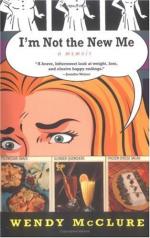After a preliminary stage as a portrait painter, Leslie exhibited at the Royal Academy in 1819 a picture of “Sir Roger de Coverley Going to Church,” the first of a long series of pictures dependent on books for their subjects. In 1825 he painted “Sancho Panza and the Duchess,” which procured him his election as an Academician the following year. The picture here reproduced is a repetition, with some slight changes, of the same subject, but was painted in 1844. Leslie may be said to have originated this style of subject in England, where he has had many followers; and, given the requisite knowledge of literature, his pictures tell their story with directness and humor. In painting, his work is rather hard; but in grace and style of drawing he was much superior to his contemporaries. Among his pictures are many suggested by Shakespeare, which have been popularized by engraving.
[Illustration: SANCHO PANZA IN THE APARTMENT OF THE DUCHESS. FROM A PAINTING BY C.E. LESLIE.
Sancho having, by the command of the Duchess, seated himself upon a low stool, is saying, “Now, madam, that I am sure that nobody but the company present hears us, I will answer without fear or emotion to all you have asked and to all you shall ask me; and the first thing I tell you is that I take my master, Don Quixote, for a downright madman.” The original picture is in the National Gallery, London.]
Leslie returned to this country in 1833 to accept the professorship of drawing at the West Point Military Academy, but remained only a few months. After returning to London, he enjoyed a successful career until his death, May 5, 1859. He was one of the first and most consistent admirers of Constable’s work, and wrote his life. He also published lectures on painting, delivered at the Royal Academy, where he had been appointed lecturer in 1848.
The consideration of the two men whose portraits face each other here, and who stood thus opposed, during their lives, as the leaders of all that constituted art in their time and country, takes us back to France. Frequent returns of this character will be necessary in the course of these papers; for, without undue prejudice in favor of the French, it must be said that they alone have through the century maintained a consistent attitude in regard to art. Other countries have from time to time encouraged painting, with as frequent lapses of interest or lack of men who could legitimately inspire interest. Although transplanted bodily from Italy to France, in the time of Francis the First, art had taken so firm a root by the commencement of this century that, as we have seen, it grew and flourished though watered by the red blood of revolution. As a national institution, following the prescribed rules of the Academy, it has, of course, met with frequent assaults at the hands of men for whom prescribed academic law was as naught in comparison with the higher law of genius. In 1819 such a man appeared, with a picture which violated the unwritten law formulated by David: “Look in your Plutarch and paint!”




